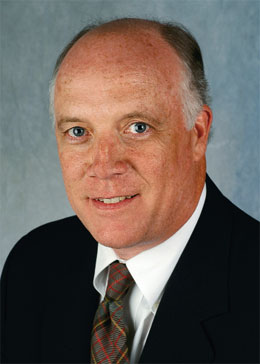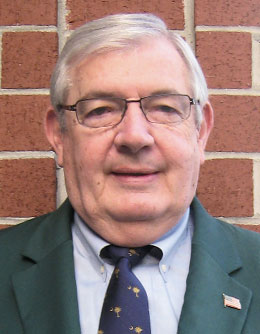|
South Carolina gears up
State moves into premier position
By Michael J. Moody, MBA, ARM
The formation of captive insurance companies is supposed to stop during soft markets, according to conventional wisdom. However, while rates for commercial property and casualty insurance have been falling significantly over the past few years—almost 10% last year alone—captive formations have continued. Many industry experts believe that an important reason for this continued interest in captives is that captive owners are now beginning to appreciate their long-term value. This increased sophistication is also responsible for the advancements in risk management as corporations begin their journeys towards the holistic approach known as enterprise risk management.
There are, of course, varying degrees of growth in captive formations depending on the specific domicile involved. Some of the newer domiciles are reporting fewer opportunities for captive formations. However, this is in sharp contrast to the larger, more established domiciles, which are still adding to their numbers.
South Carolina—case in point
South Carolina, the second largest U.S. domicile, licensed its 200th captive late last year. According to South Carolina’s director of insurance, Scott H. Richardson, CPCU, that license went to First Southern National Insurance Company and its parent, Hardin Construction on December 30, 2008. Currently, the state has a total of 203 licensed captives, with several other applicants in various stages of the application process, according to Richardson. He adds that the past 30 to 45 days been very busy.
One of the issues that the South Carolina Department of Insurance has had to deal with recently is being able to tend to applications in a timely fashion. However, the state has addressed this issue by hiring Ron Krebs as the department’s license coordinator, Alternative Risk Transfer Services Division. He says, “This domicile is insistent on a fully completed application and review process.” In fact, the department now has a process in place “that will provide a 30-day turn-around on its licensing.” Effective July 1, 2009, Krebs says, “We will commit to a schedule that after the initial meeting, and the subsequent application submission, we will have the captive licensed within 30 days.” This, of course, assumes that all parties—the applicant, captive manager, etc.—are all going forward together, as a team, he says.
A growth area that South Carolina sees going forward, Richardson says, is redomestication. “Right now we are working towards creating a niche in this area.” He goes on to point out, “We are having a fair amount of inquiries, and we are hoping to get our share of them.” To further assist them in this bid, South Carolina has developed a streamlined process to handle applications. “Obviously, we still have to follow our laws,” Richardson says, “but, we can frontload a lot of the needed information so we can move more quickly.” With this fast-track procedure, Krebs says, “We will be better able to respond in a timely fashion.”
But it is not just about speed
In addition to the more timely responses, South Carolina continues to “build a solid, consistent domicile,” says Richardson. “This is what we have been working on for the past several years.” One of the major benefits associated with South Carolina has been stability and now, he says, “We have longevity too.” Captive owners and captive managers alike know that “we are tough regulators,” but he says, “We are fair.” And he adds, “We feel that our captive laws allow for innovation and are among the best in the country. As he sees it, “Do an A+ job and business will come to you, and thus far that has proven out.”
South Carolina has proven to be a real innovator in its handling of captive managers. Richardson states that he has recently issued a bulletin that provides standards for captive managers. While they are the first domicile to establish such standards, he says, “This is in line with the whole concept of being more professional.” South Carolina is not only looking for stable captives, but stable captive managers as well.
He points out that managers play a critical role because, “In the whole scheme of things, they are the first line of defense for regulators.” While specific regulations are in place for the various financial aspects of the captive, Richardson notes, “There are large gaps of time between what are required for regulatory purposes, anywhere from one to three years, and things can go downhill quickly.” Thus, we must depend on the captive managers “to keep an eye on things.” The new requirement is important for all captive owners since, “We feel we have raised the bar for everyone.” And he believes that it is only a matter of time before other domiciles follow suit.
The use of captives for various funding options for employee benefits has become another active area for South Carolina captives. Richardson indicates that they are looking at several employee benefits-related issues right now. “Recent activity has definitely picked up,” he says. Of course, South Carolina has been involved with the widely noted innovative approach that The Coca-Cola Company has taken regarding its retiree health coverage. The U.S. Department of Labor (DOL) has initially ruled that Coke’s approach does not qualify for its expedited approval process known as EXPRO. However, Coke has indicated that it still plans to continue to work towards gaining DOL approval for its program.
Over the past few years, South Carolina has dominated in the formation of XXX and AXXX securitizations for the life insurance industry. However, Richardson points out that this has slowed down significantly. He says, “The price to do any type of ‘bonded’ transactions today almost precludes their use.” Three years ago, he says, “XXX paper was going for 4.25% to 4.5%, but today the starting point to attract capital is about 15%.” And he notes, until the interest rates get lower, activity in the securitization area will be limited. However, he also notes, “We have now started to have a few conversations about these again.”
Another recent change is the date for South Carolina Captive Insurance Association’s annual conference. Historically held in early December, this year’s 10th Annual Executive Educational Conference is September 14-16, 2009. As always, the event will be held at the Charleston Place Hotel in downtown Charleston, South Carolina. Sessions will range from introductory information at the Captive Academy to more cutting-edge material at most of the educational sessions. The conference offers a chance for industry professionals to network with other industry leaders and find out about the latest trends in the captive industry. For more information, go to www.sccia.org.
Conclusion
South Carolina has worked hard to secure its second place standing within the U.S. captive community. “South Carolina is on target right now, and we continue to work to be ‘the professional domicile.’ “Further, they are now turning their attention to providing timely responses for the application process. Additional staffing and a streamlined approval process promise to keep them at the top of their game. Krebs says South Carolina has now implemented procedures “to improve both communications and response times. We welcome submissions and would encourage prospective captive owners to give us a try. Hopefully, we can move ahead together.”
|
|
| |
 |
| |
“Right now we are working towards creating a niche in this area [redomestication].”
—Scott H. Richardson, CPCU
Director
South Carolina
Department of Insurance |
| |
 |
| |
Having developed a streamlined process to handle applications…”We will be better able to respond in a timely fashion.”
—Ron Krebs
License Coordinator
Alternative Risk
Transfer Services Division
South Carolina
Department of Insurance |
|